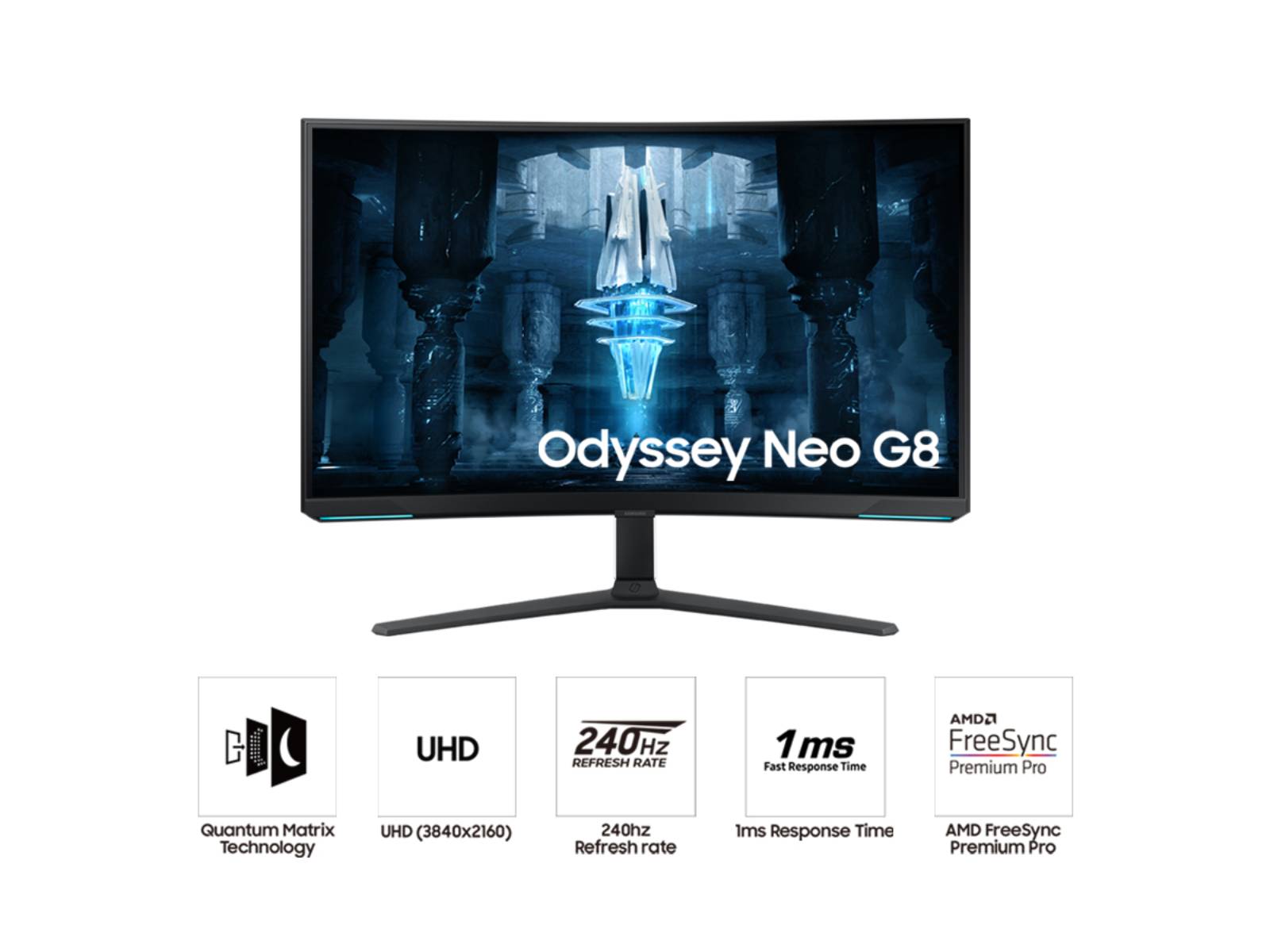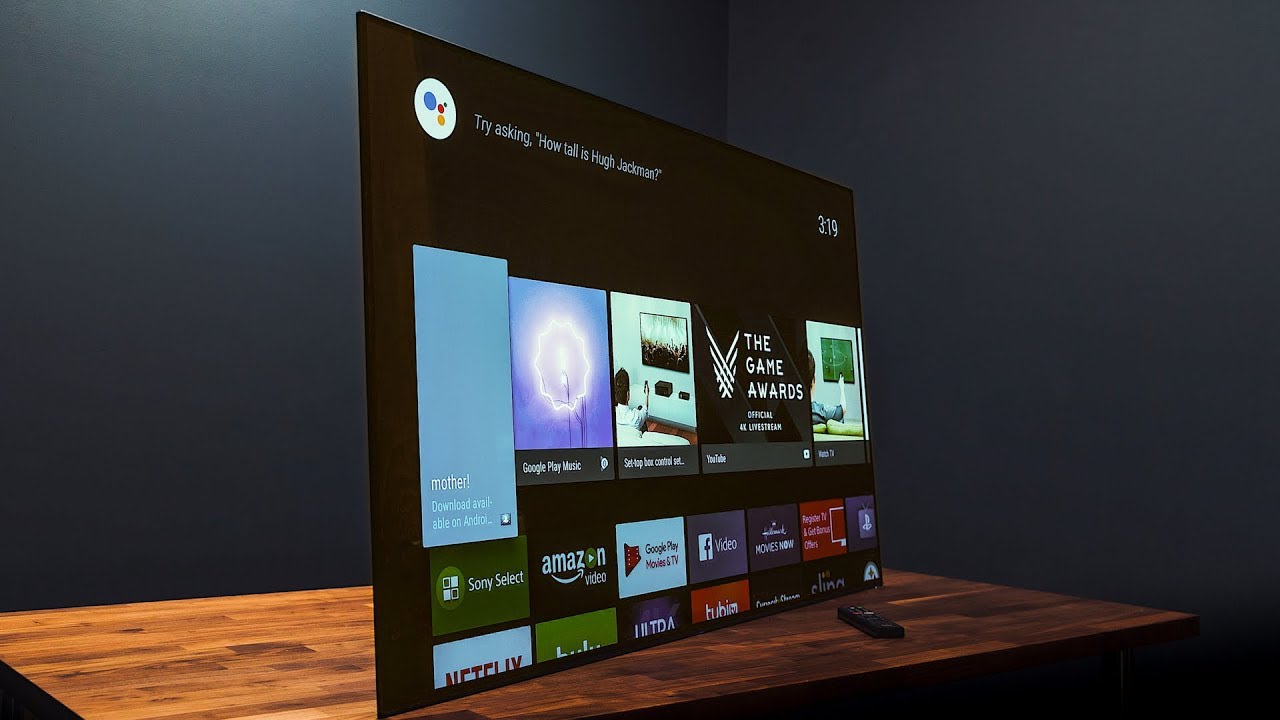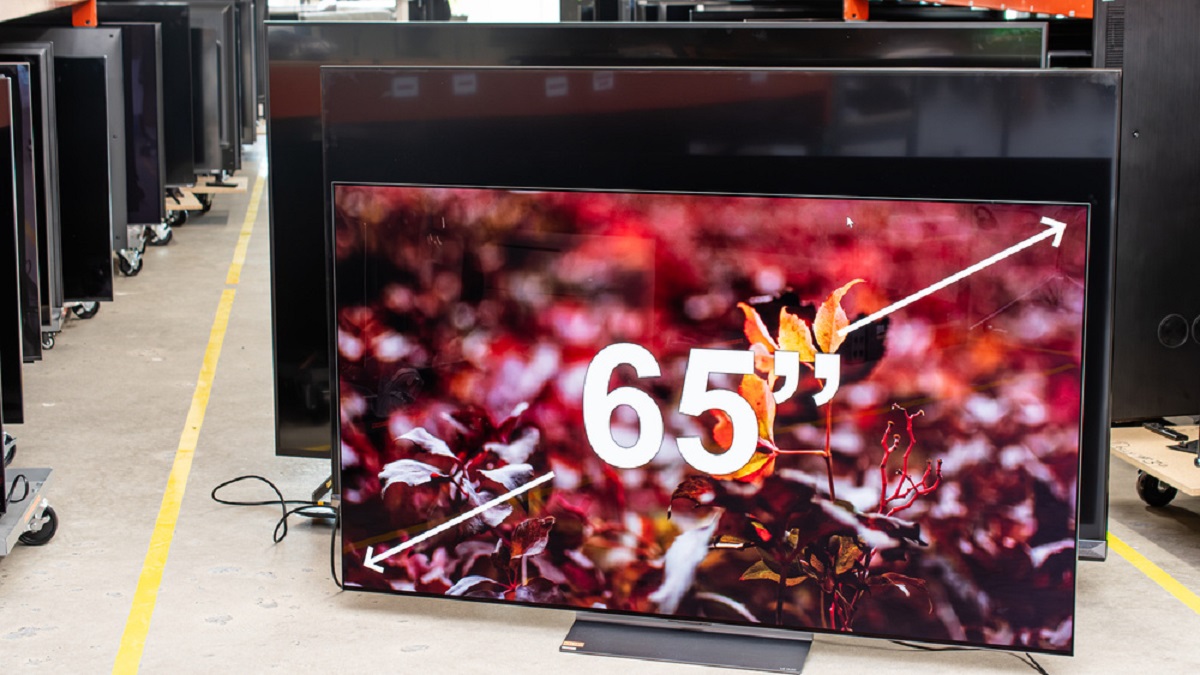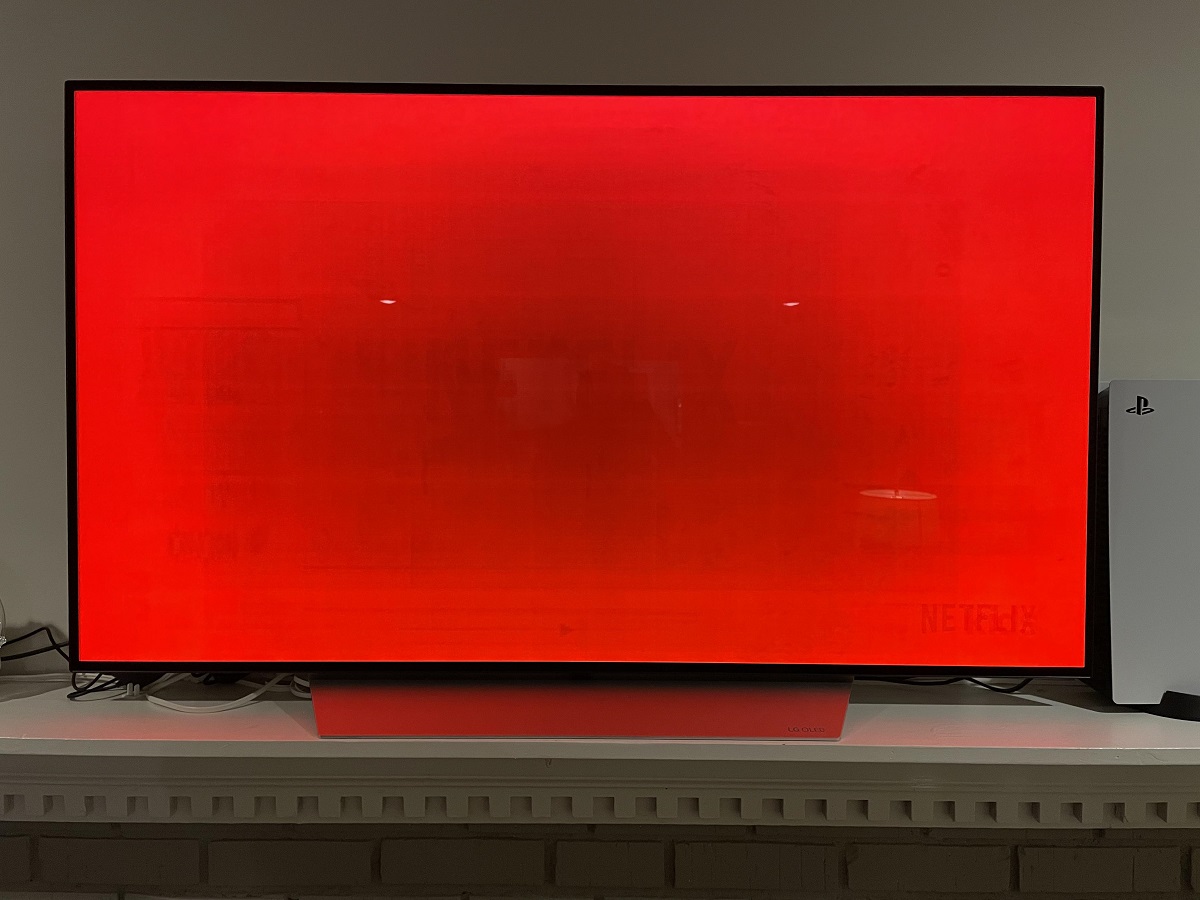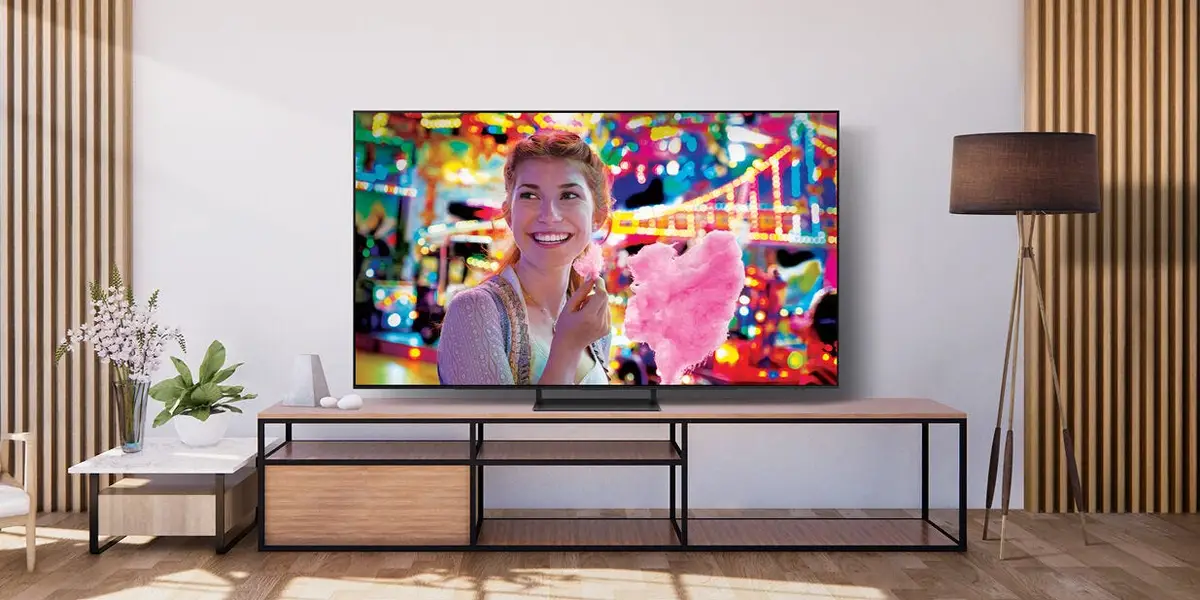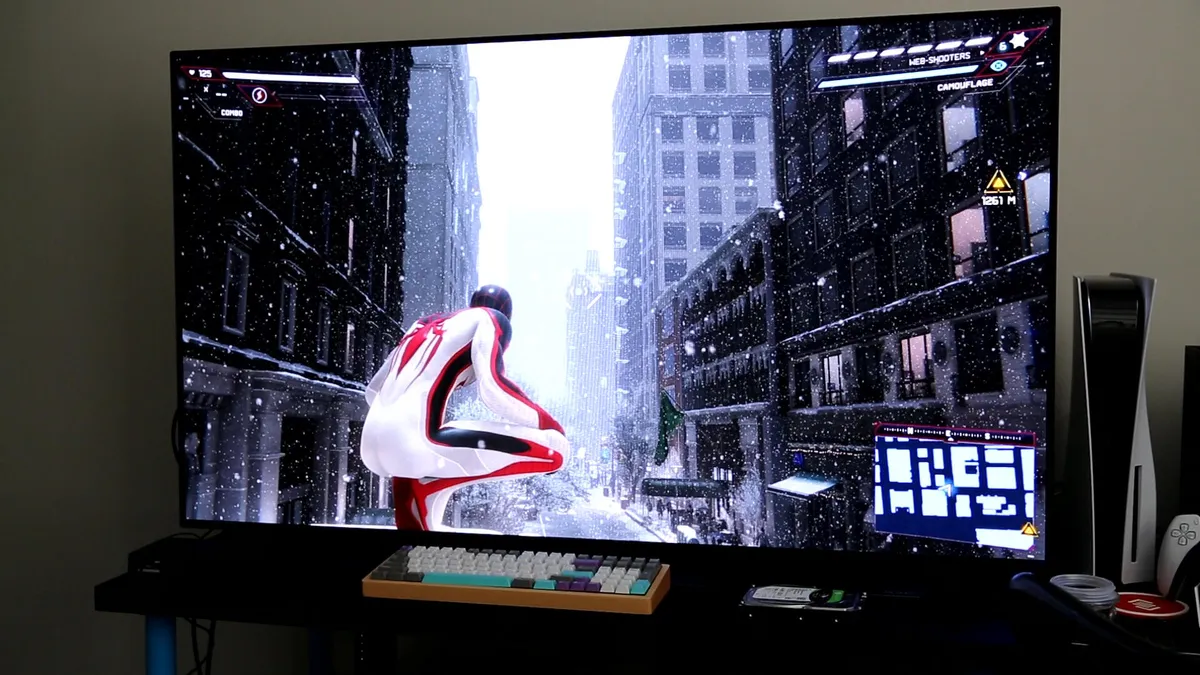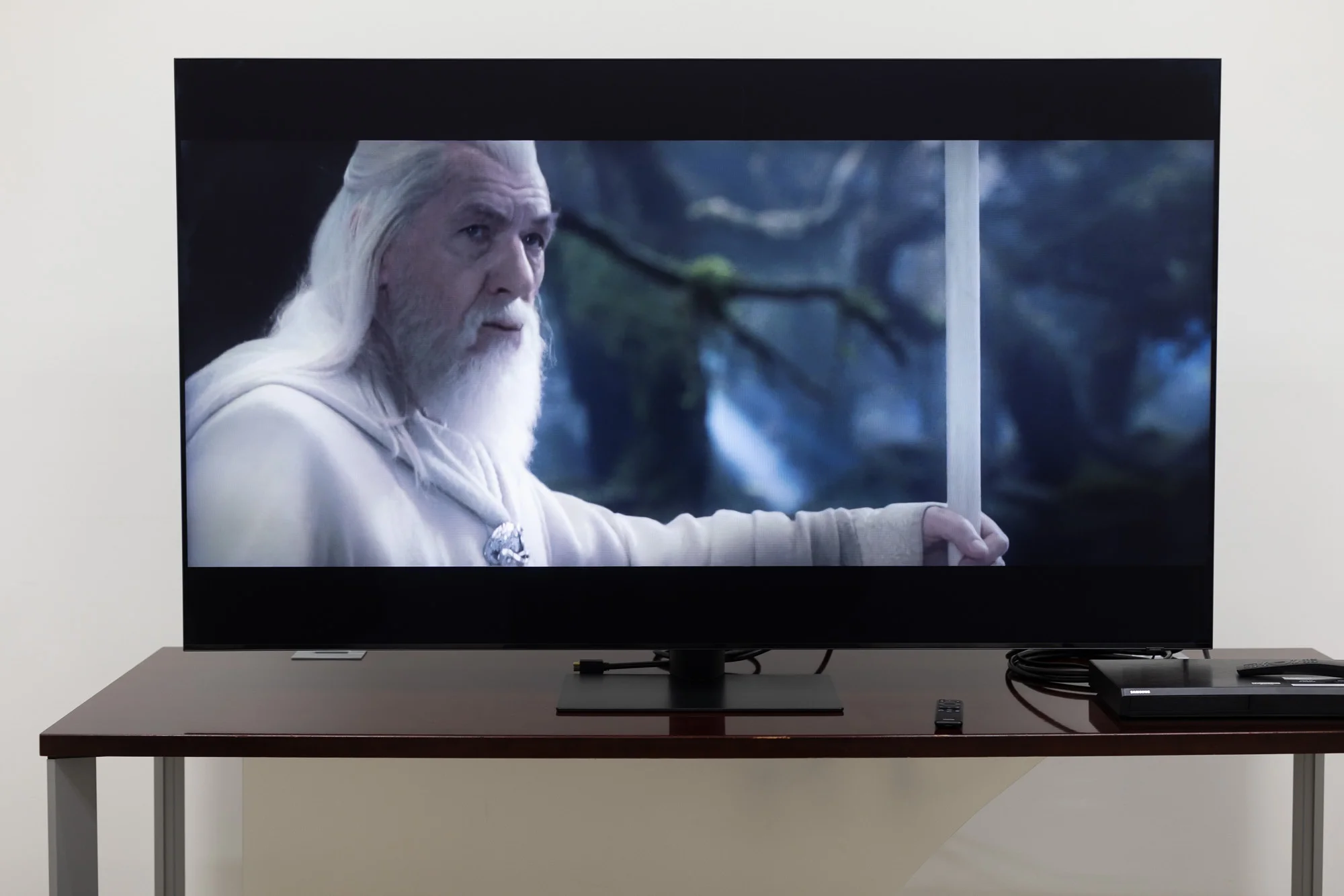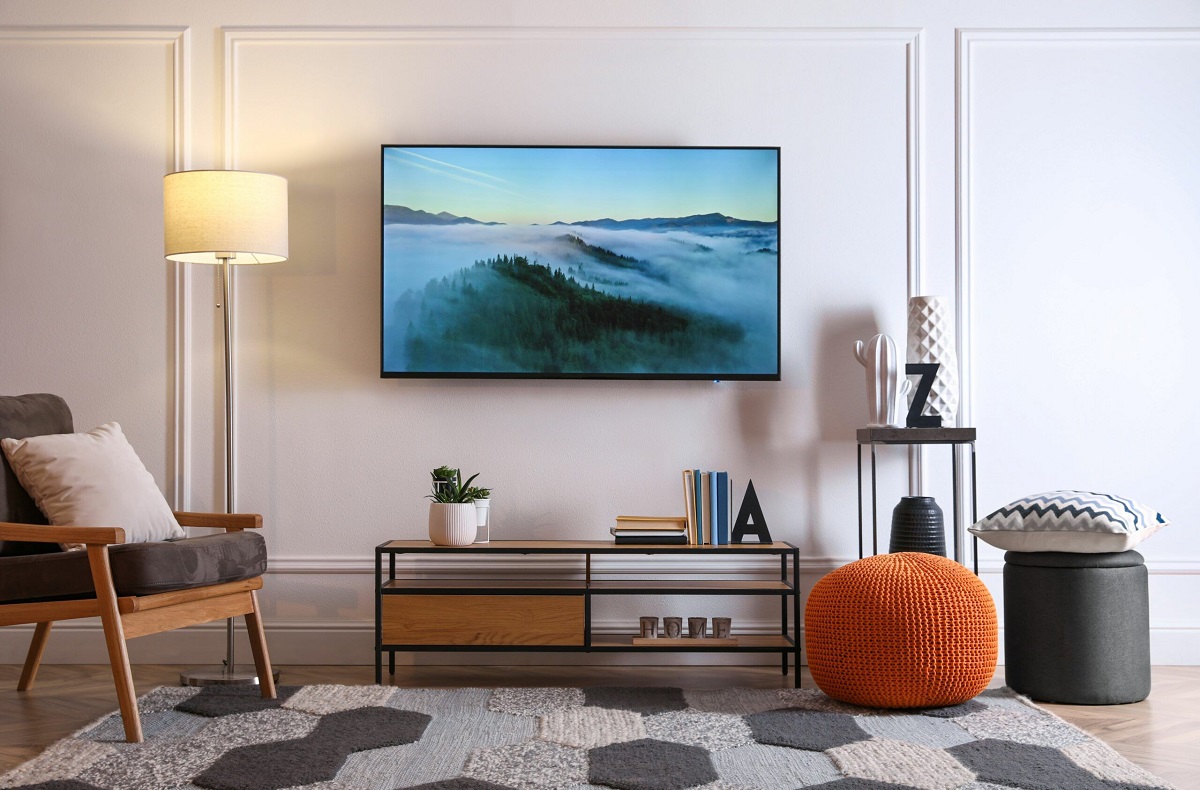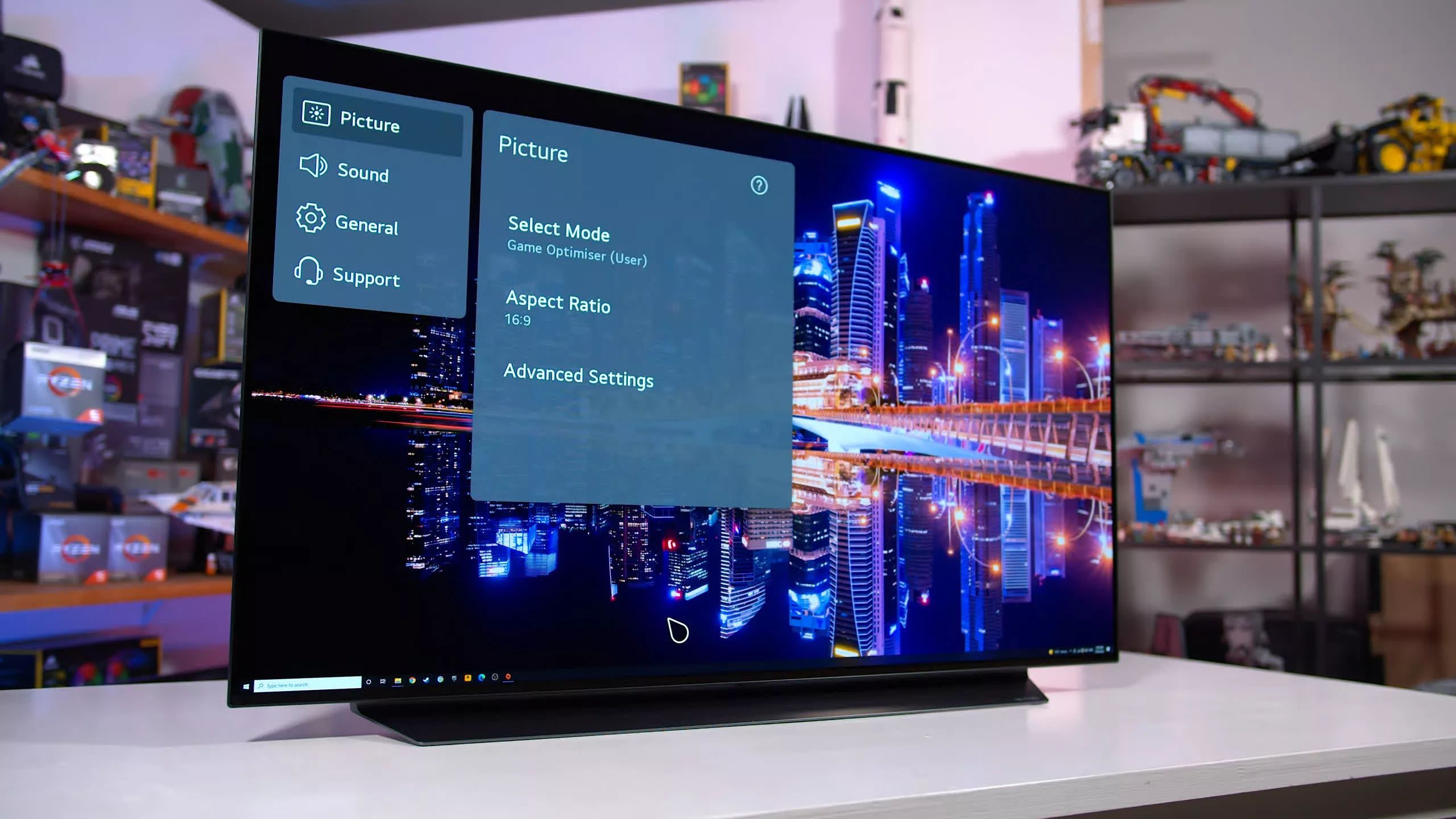Understanding Input Lag
Input lag is a term used to describe the delay between performing an action, such as pressing a button on a controller, and seeing the corresponding result on the screen. It is a common concern for gamers, as even a fraction of a second delay can significantly impact the gaming experience and performance. OLED TVs, known for their vibrant colors and deep blacks, are no exception when it comes to input lag.
The delay introduced by input lag is caused by various factors within the TV’s processing system. When you press a button, the command is sent to the TV, which then processes and displays the image. The time taken for this process is what contributes to input lag. While it may seem like a minor issue, avid gamers and those who play fast-paced games necessitate minimal input lag for precise and responsive gameplay.
Factors that can affect input lag on OLED TVs include the image processing algorithms, the picture mode settings, and the presence of additional features such as motion smoothing or image enhancement. The complexity of these processes can introduce delays, leading to higher input lag times.
To accurately measure input lag, various methods and tools are available. One commonly used method is to compare the image displayed on the TV screen with a reference source, such as a CRT monitor, which has minimal input lag. The difference in time between the two images can help determine the amount of input lag present.
Input lag is particularly noticeable in gaming scenarios, where split-second reactions are crucial. For example, in fast-paced shooter games, a delay in registering a button press can result in missed shots or slower response times, often giving the opponent an advantage. However, input lag can also affect other activities such as watching sports, where quick reactions to on-screen events are desirable.
Understanding input lag is the first step towards resolving the issue. By identifying the causes and implementing appropriate solutions, you can significantly reduce input lag on your OLED TV and enjoy a more responsive and immersive gaming or entertainment experience.
Causes of Input Lag on OLED TVs
There are several factors that can contribute to input lag on OLED TVs, and understanding these causes is essential in finding effective solutions. Let’s take a closer look at some common reasons behind input lag on OLED TVs:
- Image Processing Algorithms: OLED TVs often come equipped with advanced image processing algorithms to enhance picture quality. While these algorithms can deliver stunning visuals, they can also introduce some level of input lag. The complex calculations and adjustments involved in image processing can result in a slight delay between the input and the displayed image.
- Picture Mode Settings: Different picture modes on OLED TVs can have varying levels of input lag. Picture modes such as “Cinema” or “Vivid” usually have more image processing enabled, which can result in higher input lag. On the other hand, “Game” mode is specifically designed to reduce input lag by disabling certain image processing features, providing a more responsive gaming experience.
- Motion Smoothing and Image Enhancement: Motion smoothing and image enhancement features, such as motion interpolation or noise reduction, can significantly impact input lag. These features require additional processing time to analyze and modify each frame, resulting in delayed input response. Disabling these features or setting them to a lower level can help reduce input lag.
- TV Firmware: Outdated firmware can sometimes contribute to higher input lag. TV manufacturers often release firmware updates to address issues and improve performance. It is important to regularly check for and install firmware updates to ensure optimal performance and minimize input lag.
- HDMI Settings: The HDMI connection between your gaming console or PC and the TV can also impact input lag. Using the correct HDMI input labeled as “Game” or “PC” mode can reduce input lag by disabling unnecessary processing. Additionally, using a high-quality HDMI cable designed for gaming can ensure a stable and responsive connection.
Identifying the causes of input lag on your OLED TV is crucial in implementing the right solutions. By understanding these factors, you can make informed adjustments to your TV settings and optimize your gaming or viewing experience.
Checking TV Settings
One of the first steps in reducing input lag on your OLED TV is to check and optimize the TV settings. By making some adjustments, you can potentially minimize the delay between your actions and the displayed result. Here are some settings to consider:
- Picture Mode: Start by selecting the appropriate picture mode for gaming. Look for a mode labeled “Game” or “PC”, as these are specifically designed to reduce input lag by disabling certain image processing features. It’s important to note that using the “Game” mode may impact the overall picture quality, so you may need to find a balance between low input lag and satisfactory visuals.
- Motion Settings: Motion smoothing or motion interpolation features can introduce input lag. To reduce lag, disable these features or set them to a lower level. Keep in mind that this might affect the fluidity of motion in fast-paced scenes, so experiment and find the right settings for your preferences.
- Image Enhancing Features: Disable any image enhancing features, such as noise reduction or sharpness enhancement. These features often require additional processing time and can add to the input lag. While they may enhance the visual quality, the tradeoff in terms of responsiveness may not be worth it for gamers.
Additionally, it’s important to keep your TV firmware up to date. Manufacturers regularly release firmware updates to address issues and improve performance, which can include optimizations for input lag. Check for updates through the TV menu or the manufacturer’s website and install any available updates.
Another crucial aspect to consider is the HDMI settings. Ensure that your console or gaming PC is connected to the correct HDMI input labeled as “Game” or “PC” mode. These inputs are often optimized for low input lag by disabling unnecessary processing. Additionally, using a high-quality HDMI cable specifically designed for gaming can help maintain a stable and responsive connection.
By checking and adjusting these TV settings, you can potentially reduce input lag and enhance your gaming experience on your OLED TV. Experiment with different settings and find the optimal balance between input lag reduction and visual quality for an enjoyable gaming or viewing experience.
Adjusting Picture Mode
The picture mode on your OLED TV plays a significant role in determining the input lag. Making the right adjustments to the picture mode settings can help reduce input lag while maintaining satisfactory visual quality. Here are some tips to consider when adjusting the picture mode:
- Selecting the Right Mode: Look for a picture mode labeled “Game” or “PC”. These modes are specifically designed to reduce input lag by disabling certain image processing features. While the overall picture quality may be slightly impacted, the trade-off is worth it for gamers who prioritize responsiveness and smooth gameplay. Experiment with different picture modes and choose the one that provides the best balance between low input lag and acceptable visuals.
- Disable Energy-Saving Features: Energy-saving features, such as dynamic backlight control or automatic screen dimming, can add to the input lag. These features adjust the brightness and backlight based on the content being displayed, but the calculations and adjustments introduce delays. Disable these features when gaming to ensure the fastest response time.
- Customize Picture Settings: Within the picture mode, you may have the option to further customize the settings. Adjusting parameters like brightness, contrast, and color saturation can help optimize the visual quality without significantly impacting input lag. Keep in mind that extreme adjustments may lead to an inaccurate representation of colors and contrast, so find a balance that suits your preferences.
It’s important to note that different OLED TV models may have varying picture mode settings and options. Consult the user manual or the manufacturer’s website for specific instructions on how to access and customize the picture mode settings on your particular TV model.
By adjusting the picture mode settings on your OLED TV, you can significantly reduce input lag while still enjoying a visually pleasing gaming or viewing experience. Experiment with different settings, find the right balance, and optimize your picture mode to enhance responsiveness without sacrificing too much in terms of visual quality.
Enabling Game Mode
If you’re experiencing input lag on your OLED TV while gaming, one of the most effective solutions is to enable the dedicated Game mode. Game mode is a feature found in many modern TVs, including OLED models, that is specifically designed to optimize settings for gaming and reduce input lag. Here’s how you can enable Game mode on your OLED TV:
- Accessing the Settings Menu: Begin by accessing the settings menu on your OLED TV. The location and layout of the settings may differ depending on the model, but you can usually find it by pressing the “Menu” button on your remote control.
- Navigating to Picture Settings: Within the settings menu, navigate to the picture settings. This is where you can find the option to enable Game mode. Look for a subsection related to picture or display settings.
- Enabling Game Mode: Once you’re in the picture settings, you should find the option to enable Game mode. It may be labeled as “Game mode,” “Gaming,” or something similar. Select this option to turn on Game mode.
- Customizing Game Mode Settings: Depending on your TV model, you may have additional settings available within Game mode. These settings can vary and may include options for motion smoothing, noise reduction, or other image processing features. It’s recommended to disable or set these options to a lower level to further minimize input lag.
Enabling Game mode on your OLED TV optimizes the settings specifically for gaming, reducing input lag and providing a more responsive gaming experience. By disabling unnecessary image processing and prioritizing speed, your actions will be reflected on the screen almost instantaneously, allowing for quicker reactions in fast-paced games.
If you’re unsure about how to enable Game mode on your specific OLED TV model, refer to the user manual or visit the manufacturer’s website for detailed instructions. Taking advantage of this feature can make a noticeable difference in your gaming experience, so be sure to enable Game mode whenever you’re ready to play.
Reducing Motion Settings
Motion settings on your OLED TV can contribute to input lag, especially when they involve complex image processing. By reducing these settings, you can help minimize the delay between your actions and the display response. Here are some tips for reducing motion settings on your OLED TV:
- Disable Motion Smoothing: Motion smoothing, also known as motion interpolation or motion enhancement, aims to reduce motion blur in fast-paced scenes. However, this feature can introduce additional input lag. Find the motion smoothing option in your TV’s settings and disable it. This will eliminate any artificial frames or processing that can cause delays.
- Adjust Motion Blur Settings: Some OLED TVs offer motion blur reduction settings to fine-tune the display response. However, these settings may add input lag, especially when set to extreme values. Experiment with different motion blur settings and find the balance between reducing blurring and maintaining a responsive gaming experience.
- Turn Off Image Stabilization: Image stabilization is a feature that compensates for shakiness or camera movements in footage. While it can improve video quality, it can also increase input lag. Disable image stabilization in your TV’s settings to reduce any unnecessary processing delays.
It’s important to note that reducing motion settings may result in some loss of smoothness or clarity in fast-moving scenes. However, for gamers who prioritize low input lag, compromising on motion settings can be a worthwhile trade-off.
If you find that reducing motion settings alone isn’t sufficient in minimizing input lag, consider combining it with other adjustments such as enabling Game mode and customizing picture settings. These complementary changes can further optimize your OLED TV’s performance for gaming or other activities.
Remember to consult your TV’s user manual or visit the manufacturer’s website for specific instructions on accessing and adjusting motion settings on your OLED TV model. Each TV may have different options and terminology, so it’s essential to follow the guidelines provided by the manufacturer.
By reducing motion settings, you can help reduce input lag and enjoy a more responsive gaming experience on your OLED TV. Experiment with different settings and find the right balance between motion clarity and input lag reduction for optimal results.
Disabling Image Enhancing Features
Image enhancing features are often included in OLED TVs to improve visual quality and create a more immersive viewing experience. However, these features can introduce additional processing and consequently increase input lag. Disabling or minimizing these image enhancing features can help reduce input lag on your OLED TV. Here’s a breakdown of some common image enhancing features and how to disable them:
- Noise Reduction: Noise reduction is a feature that reduces visible noise or graininess in the image. While it can enhance picture quality, it also adds processing time and can contribute to input lag. Locate the noise reduction setting in your TV’s picture settings and disable or set it to a lower level.
- Sharpness Enhancement: Sharpness enhancement is designed to enhance the crispness and detail of the image. However, this feature can introduce additional edge enhancement and potentially increase input lag. Find the sharpness enhancement option in the picture settings and disable or reduce it to minimize input lag.
- Dynamic Contrast: Dynamic contrast is a feature that adjusts the contrast levels dynamically based on the content being displayed. While it can provide deeper blacks and more vibrant colors, the constant adjustments can introduce processing delays. Look for the dynamic contrast option in the picture settings and disable or set it to a static level to reduce input lag.
Keep in mind that disabling or minimizing image enhancing features may slightly impact the visual quality of the image. However, the trade-off between reduced input lag and image enhancement is often worthwhile for gamers and those seeking a more responsive viewing experience.
It’s important to note that different OLED TV models may have varying names or locations for these image enhancing features. Consult your TV’s user manual or visit the manufacturer’s website for specific instructions on how to access and disable image enhancing features on your particular OLED TV model.
By disabling or minimizing image enhancing features, you can help reduce input lag on your OLED TV. Experiment with different settings and find the right balance between visual quality and input lag reduction that suits your preferences.
Updating TV Firmware
Regularly updating the firmware of your OLED TV is crucial not only for overall performance improvements but also for minimizing input lag. TV manufacturers often release firmware updates to address software issues and enhance the functionality of their devices. Updating the firmware can potentially reduce input lag on your OLED TV. Here’s a step-by-step guide on how to update your TV’s firmware:
- Check for Updates: Begin by accessing the settings menu on your OLED TV. Look for an option related to system or software updates. Some TVs may have an automatic update feature that checks for and installs updates automatically. If not, you may need to perform a manual check for updates.
- Connect to the Internet: Ensure that your OLED TV is connected to the internet. Most modern televisions have built-in Wi-Fi capabilities, allowing for easy internet connectivity. If your TV is not connected, follow the on-screen prompts to connect to your home network.
- Start the Update: Once connected to the internet, initiate the firmware update process. Depending on your TV model, you may be prompted to download and install the update directly from the TV’s interface.
- Follow the On-Screen Instructions: During the update process, carefully follow any on-screen instructions provided by your TV. This may include agreeing to terms and conditions, allowing the update to proceed, and waiting for the installation process to complete. It is important not to interrupt the update process to avoid any potential issues.
- Reboot the TV: After the firmware update is successfully installed, your TV may prompt you to restart or reboot the device. Follow the instructions to ensure that the update is fully applied and the changes take effect.
Regularly updating the firmware of your OLED TV can not only enhance its overall performance but also address any known input lag issues. Firmware updates often include optimizations and bug fixes that can help reduce input lag and improve the responsiveness of your TV.
If you’re unsure about how to check for firmware updates or perform the update process on your specific OLED TV model, refer to the user manual or visit the manufacturer’s website for detailed instructions. They will provide you with step-by-step guidance specific to your TV model.
By keeping your TV’s firmware up to date, you can ensure that your OLED TV is running the latest software version, minimizing input lag and maximizing your gaming or viewing experience. Set a reminder to regularly check for firmware updates, as manufacturers often release new updates to address any reported issues or further optimize their products.
Optimizing HDMI Settings
The HDMI connection between your gaming console, PC, or other devices and your OLED TV can have an impact on input lag. By optimizing the HDMI settings, you can help reduce delays and improve the responsiveness of the connection. Here are some tips for optimizing HDMI settings on your OLED TV:
- Use the Correct HDMI Input: Most modern OLED TVs have multiple HDMI inputs. Ensure that your gaming console or PC is connected to the HDMI input specifically labeled as “Game” or “PC” mode. These inputs are optimized for low input lag by disabling unnecessary processing. Using the correct HDMI input can make a notable difference in reducing input lag.
- Use High-Quality HDMI Cables: The HDMI cable used for your connection can influence the quality and stability of the signal. It’s recommended to use high-quality HDMI cables that are designed for gaming and support high bandwidth. These cables provide a reliable and fast connection, minimizing any potential latency.
- Check HDMI Settings: Some OLED TVs offer additional HDMI settings in the menu. These settings can include options such as HDMI deep color or HDMI range. Ensure that these settings are correctly configured based on your device and content. Incorrect settings can result in compatibility issues and increased input lag.
Optimizing the HDMI settings on your OLED TV may require accessing the settings menu and navigating to the specific HDMI settings section. The location and terminology of these settings may vary depending on your TV model. Refer to the user manual or the manufacturer’s website for detailed instructions on how to access and configure HDMI settings specific to your OLED TV model.
By optimizing the HDMI settings, you can ensure a stable and responsive connection between your gaming console, PC, or other devices, and your OLED TV. This can greatly reduce input lag and enhance your overall gaming or viewing experience. Take the time to review your HDMI setup and make any necessary adjustments for optimal performance.
Using a Lower Input Resolution
If you’re experiencing significant input lag on your OLED TV, another effective solution to consider is using a lower input resolution. Lowering the resolution reduces the amount of data that needs to be processed, resulting in faster response times and reduced input lag. Here’s how you can use a lower input resolution on your OLED TV:
- Access Display Settings: Begin by navigating to the display or picture settings menu on your OLED TV. The location and terminology may vary depending on your TV model, so consult the user manual or manufacturer’s website for specific instructions.
- Select Lower Resolution: Look for an option labeled “Resolution” or “Display Resolution” in the settings menu. Choose a lower resolution from the available options. Common lower resolutions include 720p (HD), 480p (SD), or even lower.
- Adjust Other Display Settings: After selecting a lower resolution, you may need to make additional adjustments to other display settings. These settings can include aspect ratio, screen fit, or overscan. Experiment with these settings to find the best combination for your preferences and to minimize any distortion caused by the lower resolution.
It’s important to note that using a lower input resolution may result in a reduction in visual quality, as the image may appear less sharp or detailed. However, for gaming scenarios where input lag is a major concern, prioritizing responsiveness over visual fidelity can greatly improve the overall gaming experience.
When using a lower input resolution, it’s crucial to ensure that your gaming console or PC is also set to output the same resolution. If the input resolution of your OLED TV and the output resolution of your device do not match, it can lead to scaling issues and potential image distortion.
Experiment with different resolutions and find the one that provides a good balance between reduced input lag and acceptable visual quality for your gaming needs. Keep in mind that each game may have different optimal resolution settings, so you may need to adjust accordingly based on the specific game you are playing.
Other Tips to Reduce Input Lag
In addition to the settings and optimizations mentioned earlier, there are several other tips you can implement to further reduce input lag on your OLED TV. These tips can enhance your gaming or viewing experience by minimizing any delays between your actions and the on-screen response. Here are some additional tips to consider:
- Turn off Background Apps: Some smart TVs run background apps and processes that can consume system resources and contribute to input lag. Disable or close any unnecessary background apps to free up resources and ensure a smoother gaming experience.
- Reduce Network Traffic: If your OLED TV is connected to the internet via Wi-Fi, ensure that there is minimal network traffic during gaming sessions. Bandwidth-intensive activities, such as streaming or downloading, can affect the overall network performance and potentially increase input lag. Consider pausing or limiting network-intensive tasks while gaming to optimize network resources.
- Minimize External Interference: Ensure that there are no external sources of interference near your OLED TV that could potentially affect the wireless signal or cause electromagnetic interference. Keep your TV away from other electronic devices and ensure a clear line of sight between the TV and your controller or gaming console.
- Optimize Controller Responsiveness: In addition to optimizing your TV settings, make sure that your controller is responsive and performs optimally. Replace worn-out batteries, clean the controller buttons, and ensure that there are no physical obstructions or technical issues affecting its performance.
- Consider Gaming Monitors: If input lag is a critical concern for you, consider using a gaming monitor instead of an OLED TV. Gaming monitors are specifically designed to have low input lag and high refresh rates, providing a more responsive and immersive gaming experience.
While these tips may not directly affect your OLED TV’s settings, they can contribute to an overall reduction in input lag and enhance your gaming or viewing experience. Implementing these tips in combination with the settings optimizations mentioned earlier can help you achieve minimal input lag and improve your overall gaming performance.
Remember that every gaming setup and environment is unique, so it’s important to experiment with various settings and configurations to find what works best for you. The ultimate goal is to strike the right balance between responsiveness and visual quality to ensure an enjoyable gaming experience on your OLED TV.
Final Thoughts
Reducing input lag on your OLED TV is essential for achieving a smooth and responsive gaming or viewing experience. By understanding the causes of input lag and implementing the right adjustments, you can significantly minimize delays and enhance your overall enjoyment. From checking TV settings to optimizing HDMI connections and using lower input resolutions, each step plays a role in reducing input lag and providing a more immersive experience.
Remember that finding the optimal balance between input lag reduction and visual quality is key. While some adjustments may slightly impact the picture or motion quality, the trade-off is often worth it for gamers who prioritize responsive gameplay. Experiment with different settings and configurations to find what works best for your specific gaming needs and preferences.
Additionally, staying up to date with firmware updates is crucial to address any known issues and optimize performance. By regularly checking for and installing firmware updates, you can ensure your OLED TV is running the latest software version and benefiting from any input lag improvements or optimizations made by the manufacturer.
Implementing these tips and adjustments, along with other tips mentioned, can significantly reduce input lag on your OLED TV. However, it’s important to note that individual results may vary, as input lag can be influenced by various factors, including the TV model, gaming console, and specific game requirements. It’s always a good idea to consult your TV’s user manual or reach out to the manufacturer’s support for further guidance.
By paying attention to the details and taking steps to optimize your OLED TV’s settings and connections, you can enjoy a more responsive and immersive experience for gaming or watching your favorite content. With reduced input lag, you’ll be able to react swiftly and experience smoother, more enjoyable gameplay that truly immerses you in the virtual world.







